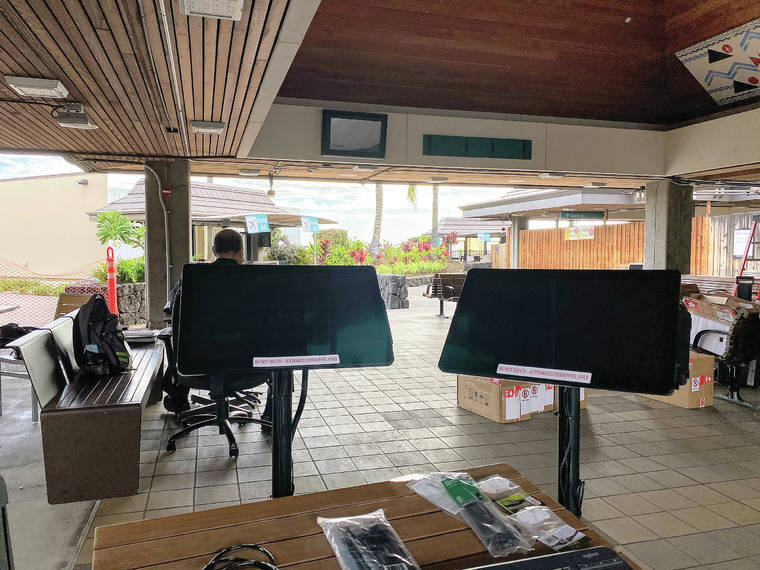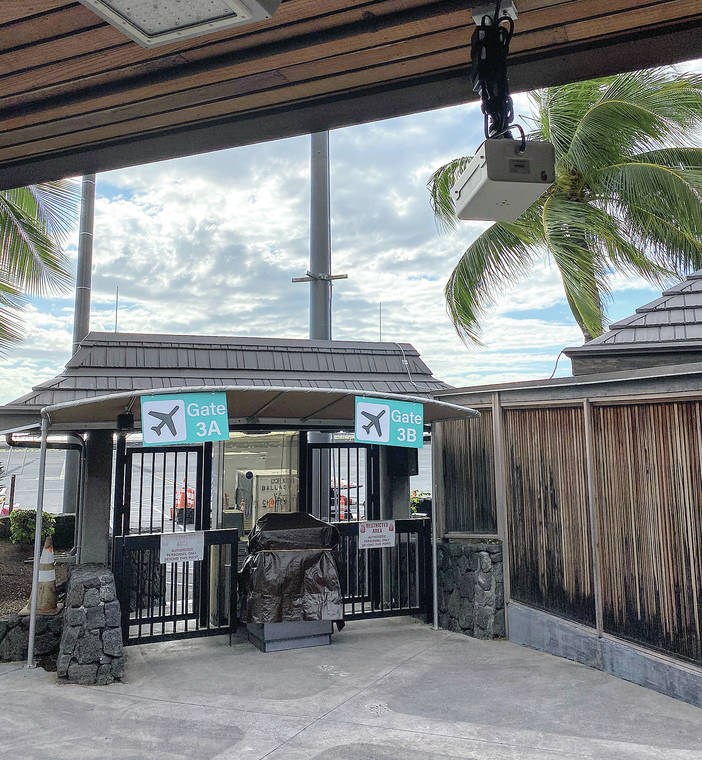Work to install thermal temperature screening equipment at all arrival gates at Ellison Onizuka Kona International Airport at Keahole is expected to wrap up today.
“By the end of the day, they’ll be at every gate statewide,” said Tim Sakahara, spokesman for the state Department of Transportation (DOT), adding the equipment could be operational in Kona today but no later than Friday.
The work is the second of a three-phase program being implemented by the DOT, NEC Corporation, NEC Corporation of America and their partner, Infrared Cameras Inc., to combat the spread of COVID-19 in the state. Today was the targeted day for completion of the second phase with plans to have the third phase, which includes facial imaging equipment, in place by year’s end. The project will cost $37.5 million, including a decade’s worth of maintenance.
The first phase, completed Aug. 5, installed the equipment at trans-Pacific arrival gates with the second phase expanding the screening to interisland arrival gates at Kona International Airport, as well as Hilo International Airport (ITO), Honolulu’s Daniel K. Inouye International Airport (HNL), Maui’s Kahului Airport (OGG), and Kauai’s Lihue Airport (LIH).
The thermal temperature screening equipment is used to help detect passengers with a temperature of 100.4 degrees and higher. The method replaces taking temperatures via hand-held thermometers.
“With this equipment, that’s no longer necessary,” Sakahara said of the one-by-one screenings. “They will walk through, the cameras will detect their temperature, and if there is someone with a temperature of 100.4 degrees or higher that’s when it will set off the alert and then the representative will pull them aside for additional medical screening and evaluation.”
Members of the Hawaii National Guard and state employees have been trained statewide to operate and monitor the equipment. American Medical Response paramedics or the Aircraft Rescue Fire Fighting units stationed at the airport will verify the passenger’s temperature.
If the passenger’s temperature is over 100.4 degrees, and he or she doesn’t require transfer to a hospital for care, the passenger will be offered a COVID-19 test and the person’s information will be collected.
“If (the test) does come back positive, they can follow up with that person to find out and then take the appropriate steps as far as contact tracing for the rest of the people on the plane,” Sakahara said.
The third and final phase will install facial imaging equipment by Dec. 31. That technology will allow for two employees to watch monitors from a control room and notify a representative to stop a person for evaluation should that person present a temperature over 100.4 degrees.
On Tuesday, a total of 2,080 people arrived in Hawaii from out-of-state destinations, including 516 visitors and 716 returning residents, via 27 arriving flights.
That figure includes 168 people who came to Kona International Airport via three flights. Of the 168 people, 15 were crew, one was in transit, seven were moving to the area, 96 were returning residents and 46 were visitors. None of the arrivals were exempt from the state’s 14-day mandatory quarantine.
From Aug. 9 through Tuesday, 1,345 arrived at Kona International Airport via out-of-state flights. Figures for interisland travel are not available.





